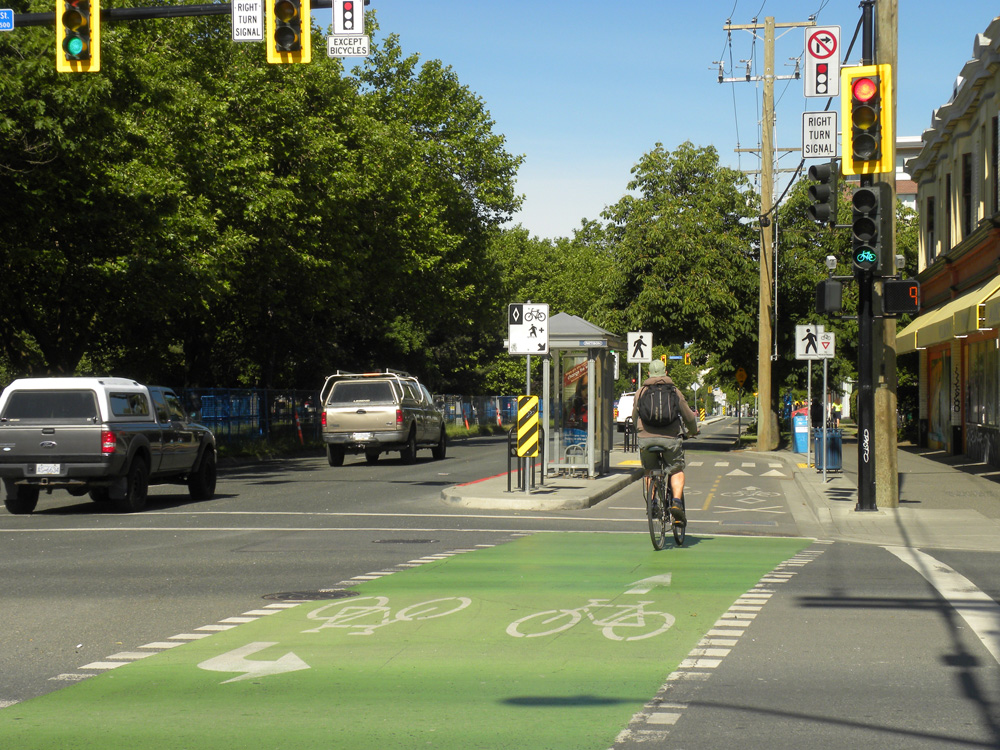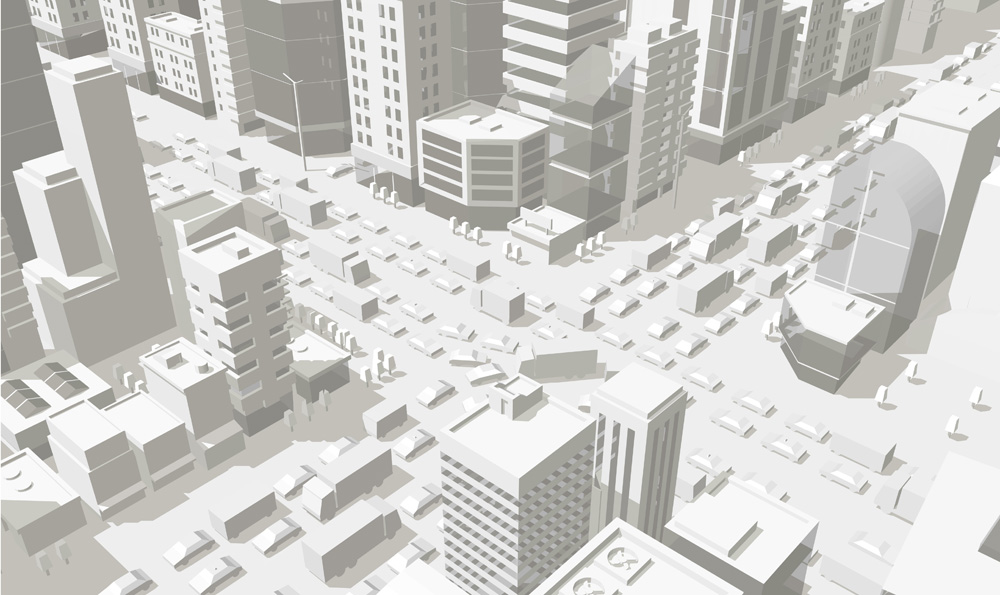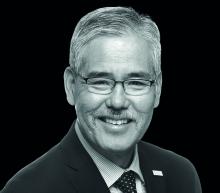
A trained civil engineer from California’s Bay Area in a suit and tie, talking about intersections – it doesn’t sound like the sexiest idea ever. And yet Mr Barricade (real name: Vignesh Swaminatham) amassed more than 400,000 followers on TikTok by posting videos in which he did just that.
The social media platform is better-known for lip-synching clips (Sarah Cooper’s interpretations of Donald Trump’s speeches caused a global stir) and dance videos (actually Mr Barricade has also done some of that too). But Swaminatham’s posts have been disarming and (in ITS terms at least) a breath of fresh air.
While local infrastructure is not particularly exciting on the face of it, it is fundamental to the way we live, both in terms of quality of life and safety. If you work in the ITS industry then you know this; but Swaminatham’s point is that road junctions – how they are made, what priority is given, how we use them, the ways they interact with other urban planning issues – have a significant impact on our daily lives and yet are something most people probably don’t think about.
He started posting on TikTok in September last year. “I go over visually how these facilities work to explain the issues to different types of people,” he says. This means a typical Mr Barricade video – such as one about the cycling/pedestrian improvement work on Doyle Street in Emeryville, California – involves Swaminatham literally walking around the junction (which he designed), talking to camera all the time about what has been done and why.
Tactical urbanist projects
“We talk about these tactical urbanist projects where I put something in the ground, I want people to go look at it, so they can feel it,” he explains. “So when I film my videos I’m always at an angle where I’m talking about you as a user, you’re going to be viewing it this way, and here’s how you’re going to interact with this, and a lot of traffic engineers struggle with actually getting on the ground and looking at roads. A lot of them love just looking at plans from above and being, like, ‘this is what people will do’. And when you bring them out to the intersection, they actually get anxiety and they get nervous because it doesn’t feel like the way that they thought it was gonna feel. This is a big problem we have in our traffic engineering communities: we’re doing less and less work locally and so there’s less and less of that ‘feel’. Even I work on a road where I never got a chance to go out there and go look at it, I’ve only had time to do it in Street View.”

Mr Barricade is fun but also informative, sometimes ‘stitching’ the first seconds of popular videos related to engineering together with his own explanations about them.
“I think that’s also helped me build a lot of interest in this subject matter,” he says. “Roads and crosswalks and stuff that’s around your own neighbourhood is probably the most important thing in your life, because every time you do anything you have to cross that intersection, whether you’re walking or biking, and so many people don’t know anything about their own local infrastructure – when that’s the first thing that they deal with on an everyday, all-day basis every single time they do anything. There’s so much that they can connect with about their own community and built environment with their neighbours. I do genuinely believe that if more people are aware of that, we can create a better community. That’s what I’m doing with the channel and my practice: I have a lot of a lot of little antics that I can talk about with folks, about things that I’ve seen in different cities or frustrations that I have in running a business, or whatever, so it’s just turned into a channel where I am enjoying posting stuff.”
Bicycle advocates
There’s an authenticity about Swaminatham - something that people often get wrong on social media. He takes complex subjects and turns them into straightforward, engaging, bite-size videos.
“I think I’ve humanised a lot of these things that that were always felt to have a barrier of entry,” he says. “Typically they are only easy to access by people who have time and who have the knowledge to be able to go do their research. When I talk about this stuff, I’m not just talking to the bicycle advocates, and I’m not just talking to the people interested in urban issues - I’m also talking to the folks who hate urban projects and don’t want anything to happen in their neighbourhood. I’m also talking to the folks who maybe don’t even speak the language, who don’t even understand the terminology, don’t even know that they have the power to give their opinion on things.”
He identifies four groups: “Like I said, there’s the Nimby folks who don’t want anything; there is the bicycle advocates who only want bike lanes; the urban folks who want better urban life; and the folks who don’t know what’s going on - whether because they don’t speak the language, or they’re undocumented, or they work two jobs and they don’t have time to figure out what’s going on.”
Therefore it’s a broad audience and he is mindful, when making content, that he wants to reach them all. As a downside to this outreach, he says he has also suffered racism on the platform – a sad blight to so much social media interaction. “I had to stop posting for a little bit to kind of let the hate go away,” he recalls. But he persists.
Swaminatham runs a civil engineering consulting firm, Crossroad Lab, designing and delivering roadway facilities, many of which currently involve bicycle improvements. “A lot of the changes we’re doing to our roadway right now are to accommodate different modes,” he says. “And those require a moving of kerbs, moving the drainage inlets, new signal timing, different types of pavement, paint, posts, and working with the community on what these types of costs are, how they are to be installed, who’s going to maintain them. There’s really a lot more to it than just, ‘hey, we want a bike lane’ or ‘we want stripes on the ground’. And so I built a firm that can answer all those qualms and questions that cities would have against installing bicycle facilities.”
Quick-build initiatives
He has also taken on local political roles. He is chair of the City of Cupertino’s Sustainability Commission, looking at everything climate-related, including transportation, clean infrastructure and housing equity. He is also chair of the Valley Transportation Authority Citizens Advisory Committee, “guiding them to make sure that we are more equitable in our planning, bike and transit infrastructure, and making sure that the citizens’ issues that they voted on are actually done properly by the agency”. This involvement gives him a broad view. “I have a pretty good understanding of what the issues are and who the decision makers are when we move projects along to delivery.”
He favours quick-build initiatives. “We do stuff out of paint and posts first - instead of doing it out of concrete, new signals and new sensors first - because we do not know everything that we need to know about the new concrete, the new signals and new sensors. But we do know that we can change the geometry with paint and post now. So I work on a lot of projects where we do the paint and post first, we collect data and we understand the community’s issues before we go build it with the next generation of infrastructure with curbs and sensors and more.”
A lot of his work is related to ITS, “more from a process or political standpoint”. He takes the example of a company coming to a city authority with a new video detection technology. “If they wanted to go piggyback it on a big signal project, they can, but a lot of times that project will be delayed by the environmental regulations of going and ripping up the infrastructure,” he points out. “And so the city has big projects where they want to improve all the signals for the city and they need to sync them with all these big capital improvement projects. A lot of these quick-build projects that I do are a great testing ground for these new signal technologies, new systems, because then they can just recalibrate it to the new geometry that we set, and finalise it before we build it out of concrete.”
This is cost-effective, he believes. “So for cities that are trying to get to better mode shift, better safety, better technology, it makes more sense for them to go through a quick-build model than it does to actually wait for the big projects to do that. The problem is a lot of times the ITS industry is so focused on the big projects, or what the new developers are doing, that they are missing out on the opportunities in just kind of ‘subconsciously’ upgrading the entire city’s system.”
He sees his part of California as offering a warning to other urban authorities. “We in the Bay Area have very unique issues,” he says. “Housing crisis, crazy income inequality, our traffic has gotten crazy, we’re not building densely, we have scooters going around everywhere, we have structured systemic issues of class and more in housing.”
His videos therefore show people what may be coming down the track in their own city, state or even country. “’Hey, you - Austin, Texas, you’re going to have this issue that we’re having here, because new tech companies are moving there who continue to sprawl out to your city, you’re going to have so much traffic in your dense downtown,” he says. “The solutions that we’re talking about are going to be the only way for you to fix it: same thing is gonna happen in Colorado, and it’s gonna happen in Chicago, and it’s gonna happen in all these major cities if they don’t plan out their housing properly, to build more densely, and plan their intersections.”
Social media outreach
He acknowledges that other locations will have different challenges but believes there is a lot to be learned from the Bay Area: “A lot of cities are eager for this kind of stuff.”
His social media output hasn’t always been about transport engineering - he started off posting footage of him dancing. “Yeah, well, to be honest with you, my dance videos were quite unique. Most people on TikTok will put on nice outfits, and they would go into nice scenery and they do the typical Ted Talk dance moves. But I originally got popular from me just sitting and listening to my own music, dancing without even getting up from my desk.”
He says it was “a way to kind of get my brain off of all the other roles that I do”, and he often posted them while waiting for work Zoom calls to begin. “I’d do a little dance, you know, and then I would move on with my day.” He began livestreaming his work sometimes, showing people what he did and building a core following. “Everybody who knows me in the real world knows me as Mr Barricade who does roads. What’s really nice about where I’m at now is, I don’t have a channel that just posts roadway content; it’s turned into a place where I can be myself.”
 He says he has a “lot of fans who are on far extremes of the political spectrum”. But the key to engagement is respect. “I’m very understanding of all the different issues at hand when we do this kind of stuff and I can try and communicate about why would this plan be good for some people and why would this plan not be good for some people. I understand their perspective, I may not agree with everything, but I understand like hey, you should probably think about others when you think about this stuff; or hey, we’re not going to rip apart everything just to come up with something totally brand new.”
He says he has a “lot of fans who are on far extremes of the political spectrum”. But the key to engagement is respect. “I’m very understanding of all the different issues at hand when we do this kind of stuff and I can try and communicate about why would this plan be good for some people and why would this plan not be good for some people. I understand their perspective, I may not agree with everything, but I understand like hey, you should probably think about others when you think about this stuff; or hey, we’re not going to rip apart everything just to come up with something totally brand new.”
For instance, when it comes to making changes to local infrastructure, not everyone is going like the idea of more bike lanes, or an increase in enforcement cameras.
“These are things that are in the back of people’s minds, you know, and I’m just giving people the right terminology and enabling them to think about it, they get to participate,” he explains.
A few weeks after talking to Swaminatham, there is a setback: as ITS International went to press, TikTok had removed Mr Barricade’s account. This could be the result of any number of factors and is not vanishingly uncommon. It may also not be permanent – but it is certainly unwelcome.
“Outreach and education is the most important part,” Swaminatham writes in an email. “It enables the community before decisions are made. We can rebuild on other platforms but the reach will never be the same.”
As he said in our interview: “I love talking about this stuff, if you haven’t noticed.”
And with or without TikTok, Mr Barricade wants to continue getting other people to love talking about it too.










